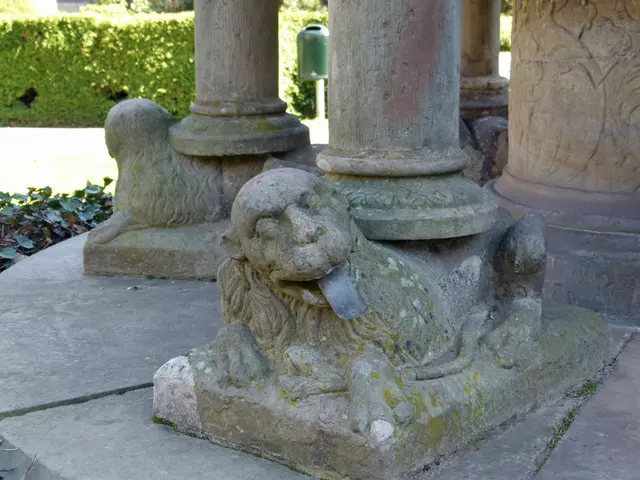Tackling Antique Clock Repair: Navigating the Unexpected Challenges of YouTube
Danger zones for antique clock restoration on YouTube: Importance of exercising caution highlighted
Embark on an exciting journey as we uncover the treasures and pitfalls of repairing antique clocks using YouTube as your guide! But remember, this path is far from straightforward.
A Jumbled Mess of Knowledge?
One of the biggest challenges when learning antique clock repair from YouTube is the sheer volume of content available. While there's a wealth of information out there, it can be difficult to separate the wheat from the chaff. There are countless amateurs and hobbyists offering their insights, but their qualifications and expertise may be questionable.
Unchecked Education
Unlike traditional academic or professional settings, YouTube does not have any formal accreditation or certification processes. This can lead to unqualified individuals presenting themselves as experts, with potentially dangerous consequences for your antique clock.
The Quick Fix Fallacy
Many YouTube videos focus on quick-fix solutions rather than proper, long-term maintenance and repair. While these videos may offer a simple solution, they often do more harm than good. For example, immersing an entire movement in a cleaning solution (a process known as "Duncan Swish") may provide quick results, but it's not a substitute for a thorough disassembly and repair.
Missing Pieces
Lack of context or background information in videos can make it difficult to diagnose and address issues properly. Some videos may not provide adequate instructions, leading to confusion or even dangerous situations if attempted by an untrained individual.
The Gray Area of Expertise
Steps may be missing from videos because the person making the video may not have the necessary knowledge or experience to perform a complete repair. They may be amateurs or hobbyists who share their experiences, but their level of training and experience may not match that of a professional clockmaker.
On the other hand, videos may intentionally withhold certain steps or information to encourage viewers to seek their professional services. So, it's important to approach YouTube tutorials with caution and skepticism.
YouTube's Hidden Gems
Despite the challenges, YouTube can be a valuable resource for antique clock repair enthusiasts. As your knowledge of clock repair expands, you'll develop the ability to distinguish between reliable sources and those that may be less trustworthy.
There are several YouTube sources that I consider to be of value, but I won't reveal them here. Each clock repairer should assess and determine their own go-to sources for information and guidance. It's important to critically evaluate and verify the information presented in any online source before applying it to your own clock repair work.
Final Thoughts
While YouTube can be a useful tool for antique clock repair, it's important to approach this journey with caution and skepticism. With so much content available and a lack of oversight and regulation on the platform, it can be difficult to distinguish between reliable and unreliable sources of information. Many videos may focus on quick fixes or shortcuts rather than proper maintenance and repair, potentially leading to irreversible damage to valuable antique clocks.
When watching clock repair videos on YouTube, it's important to approach them with a critical eye and evaluate whether the procedures being shown are safe, performed correctly, and whether the repair will ultimately increase or decrease the value of your antique or vintage clock.
In my view, it's not useful to comment on a clock repair video that shows incorrect methods or practices as there are plenty of others who will take great joy in criticizing. Rather, it's more advantageous and less frustrating to find alternative sources that can provide valuable suggestions and guidance for clock repair.
Keep searching, those sites are out there, and once found, you will be rewarded!
- Antique clock repair can be a thrilling expedition, but navigating through YouTube's abundance of content can be a complex task, as separating relevant information from irrelevance proves challenging.
- YouTube lacks formal accreditation or certification processes, making it possible for unqualified individuals to pose as experts, potentially leading to risks for your antique clock.
- Several YouTube videos focus on quick fixes instead of long-term maintenance and repair, offering simple solutions that, though tempting, often do more harm than good.
- Inadequate context or background information in videos can hinder proper diagnosis and resolution of issues, potentially causing confusion or dangerous situations for an untrained individual.
- Videos might unintentionally leave out vital steps due to the lack of expertise or experience of the person making the video, or intentionally withhold information to encourage viewers to seek professional help.
- Despite the pitfalls, YouTube can become an invaluable resource for clock enthusiasts as they immerse themselves in the art of repair, eventually honing their ability to discern between credible and questionable sources.
- It is essential to critically evaluate and verify the information presented in YouTube videos before applying them to your antique clock repair work, as they can significantly impact the value and functionality of your vintage timepiece.




